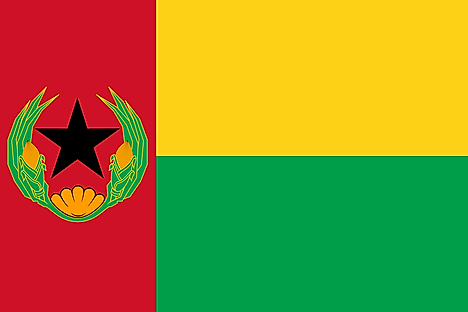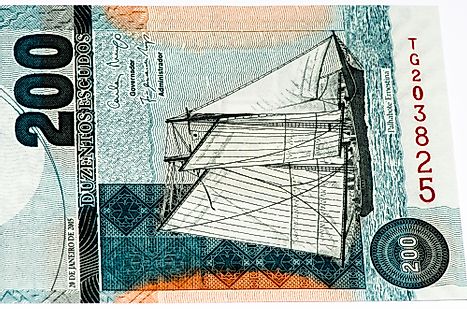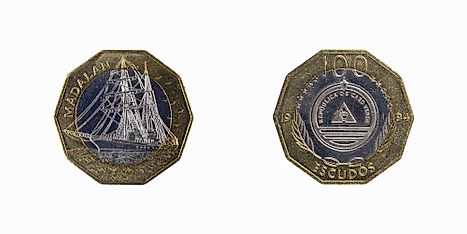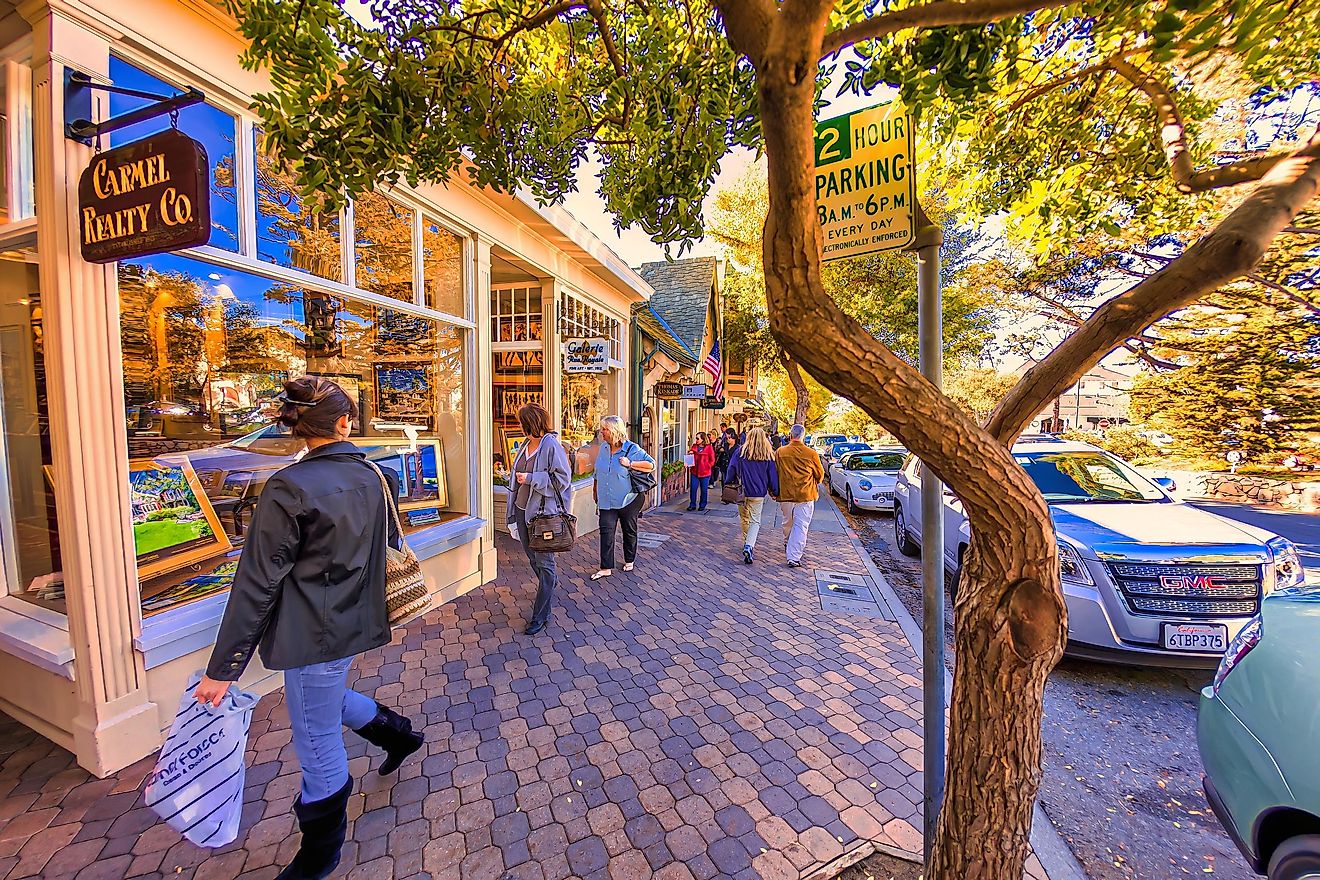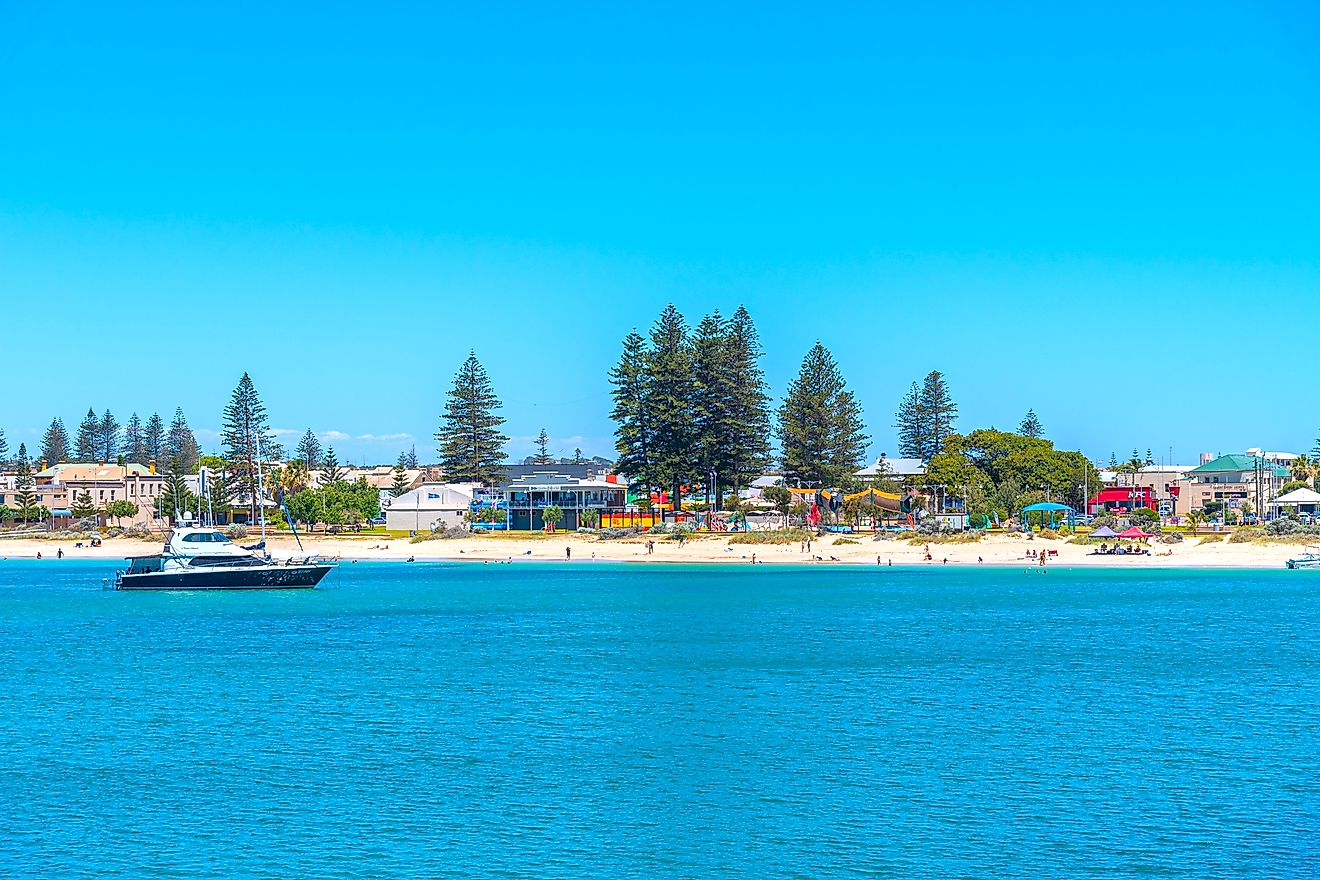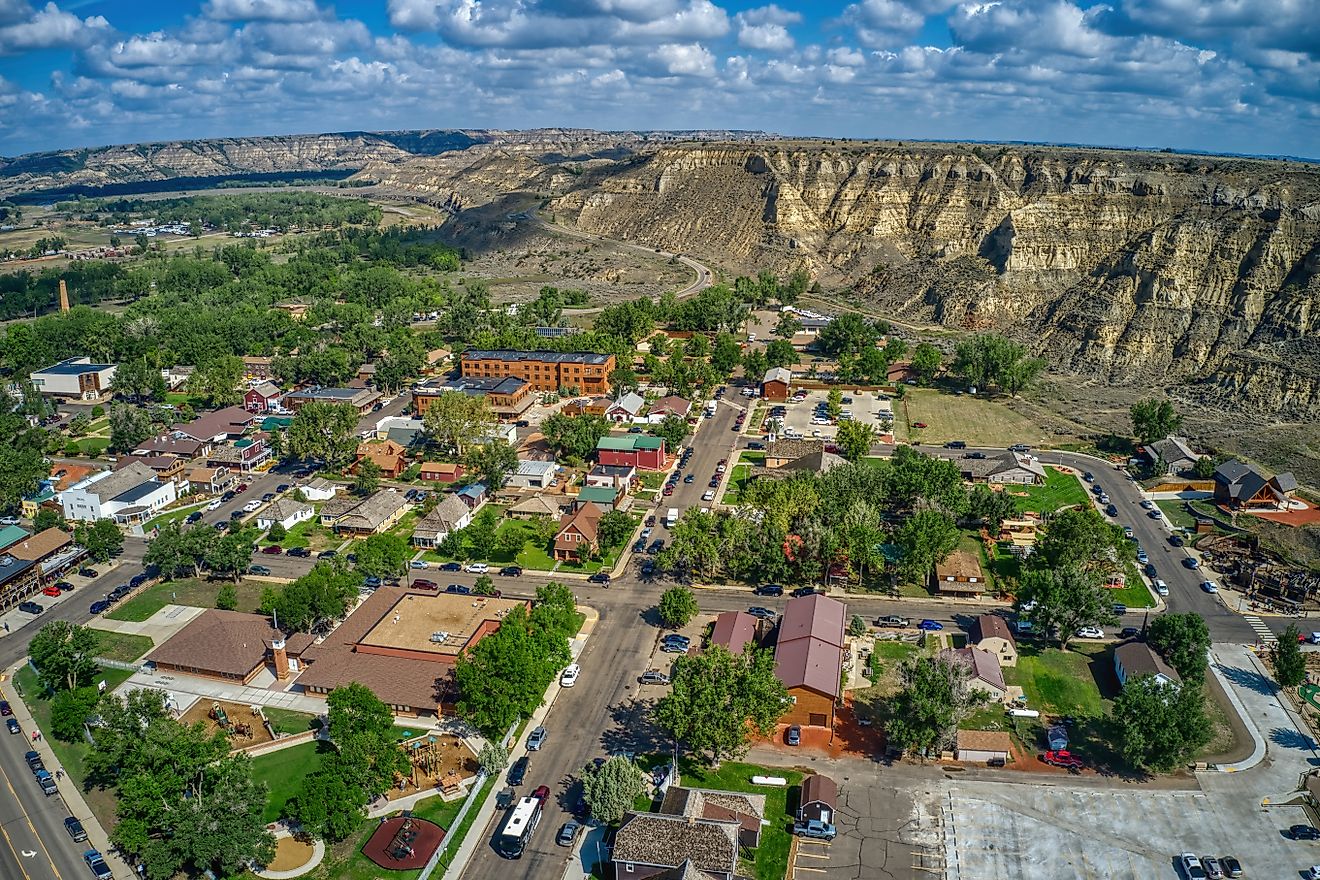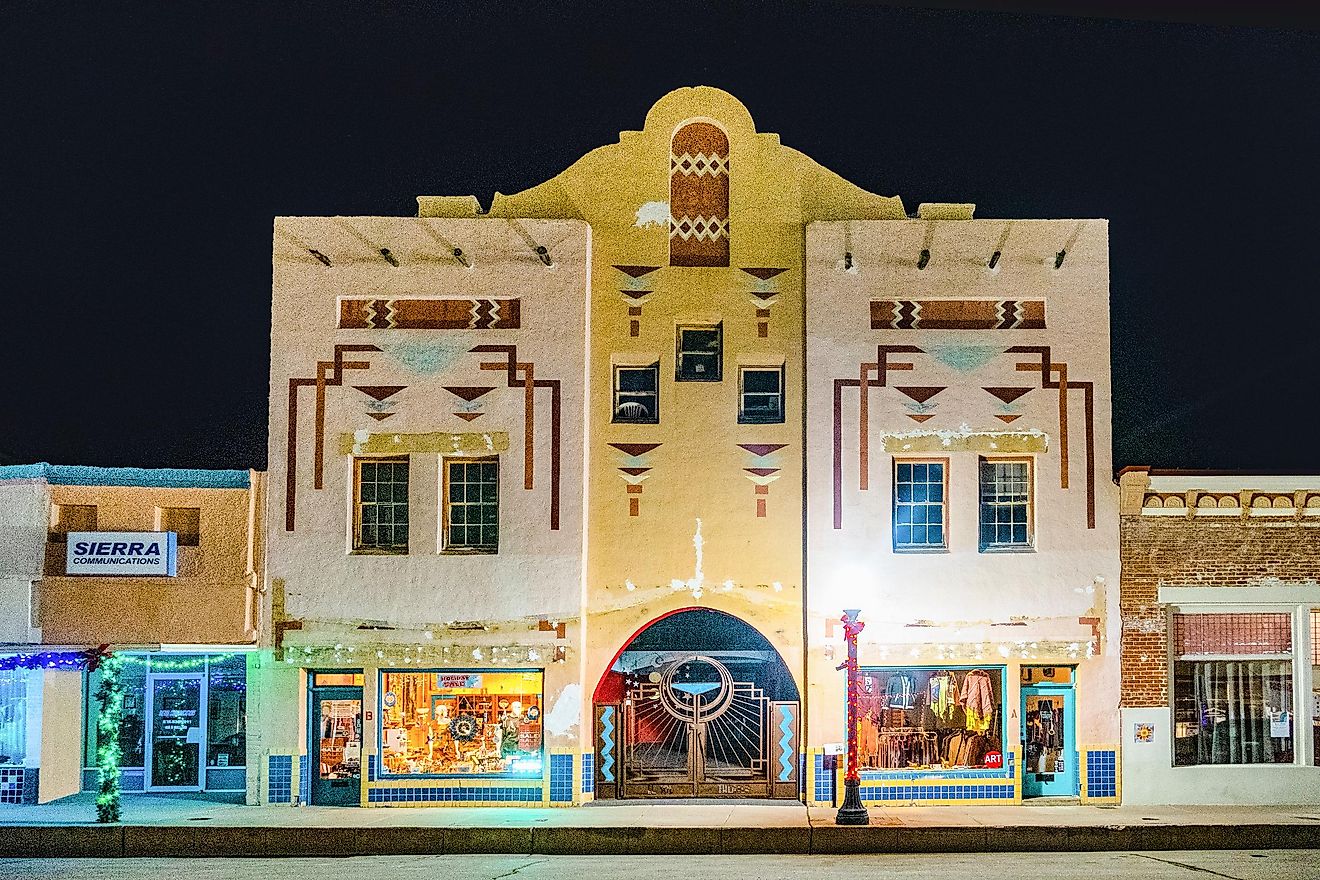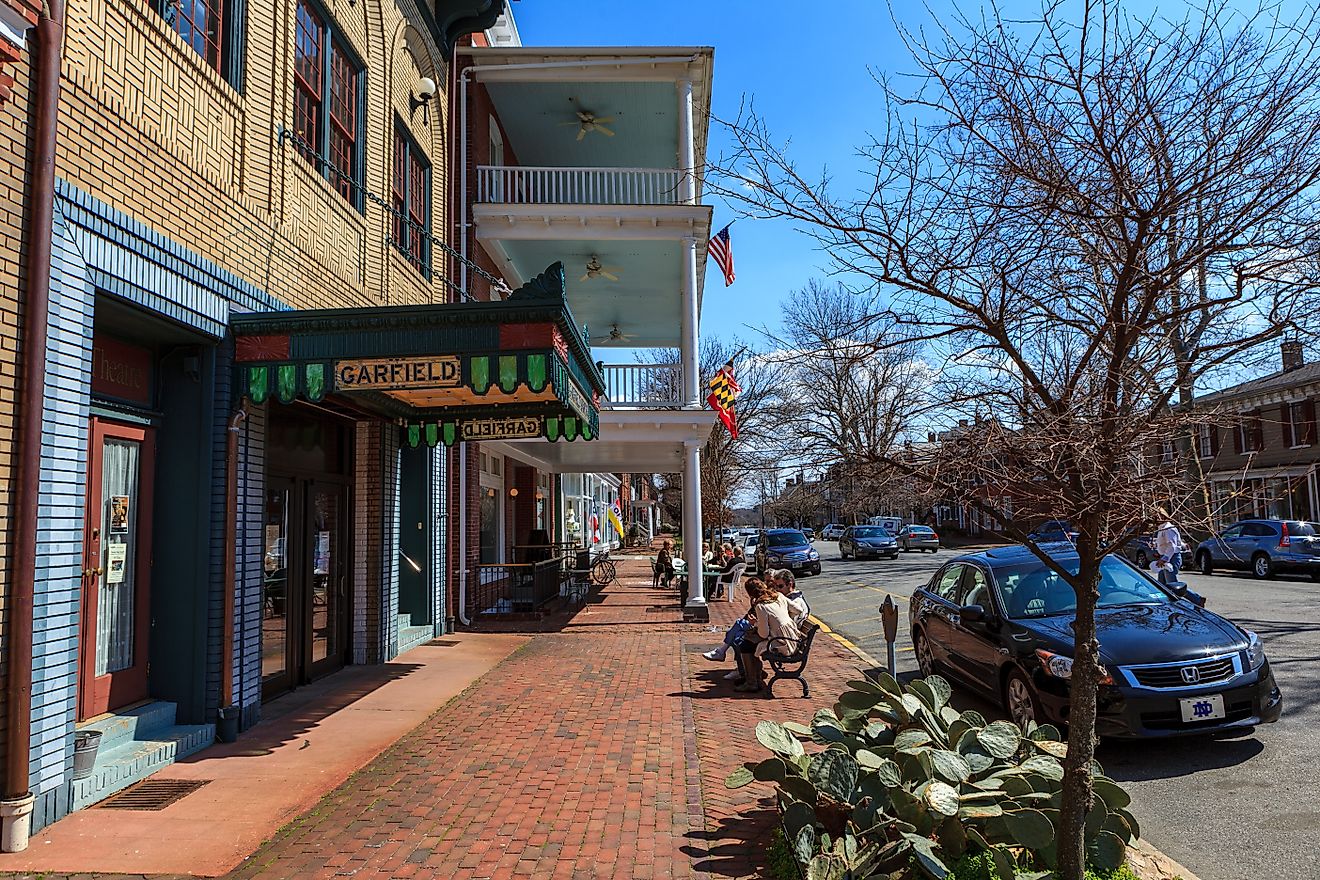Flags, Symbols & Currency of Cape Verde
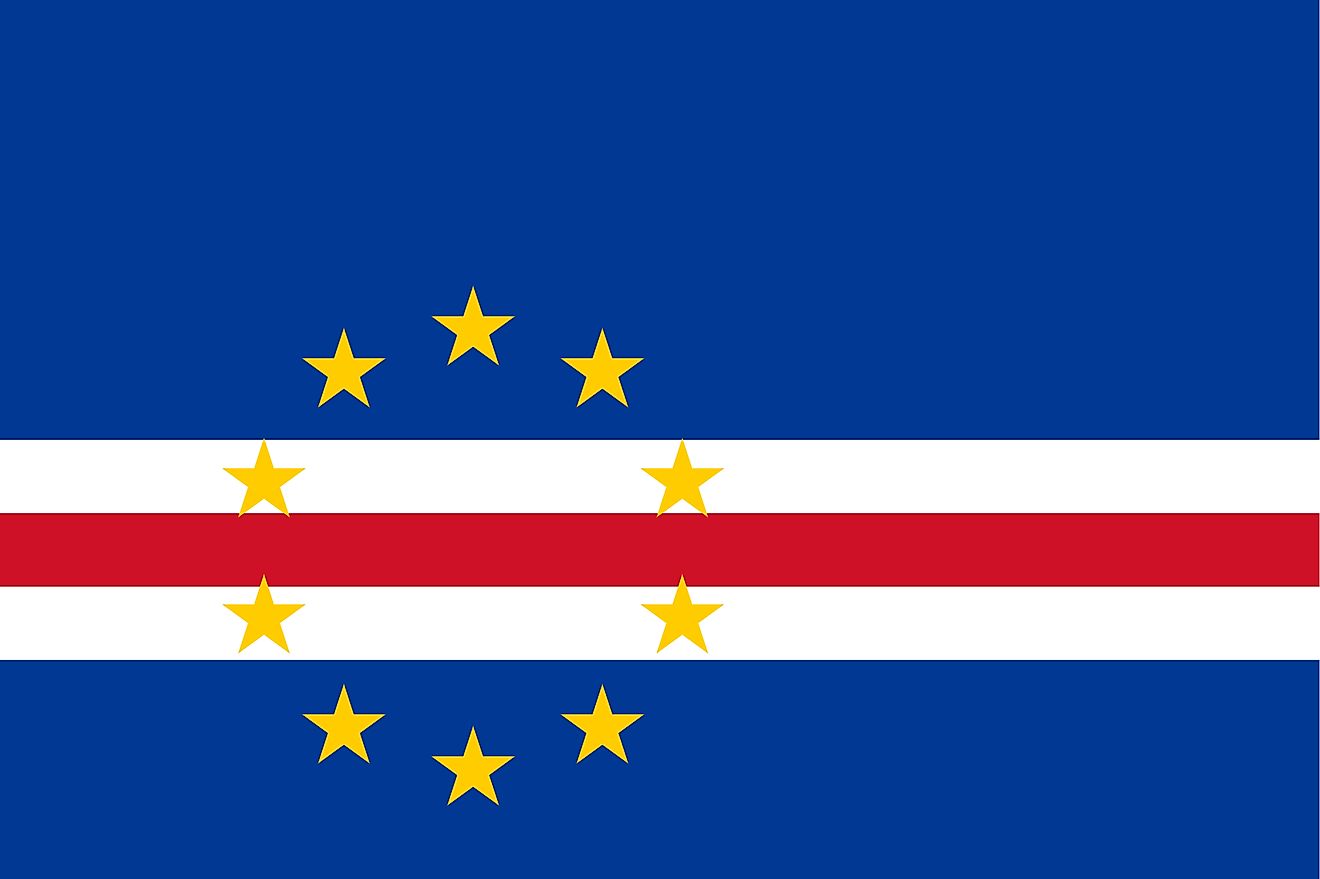
The National Flag of Cape Verde was officially adopted on September 22, 1992.
The National Flag of Cape Verde features five unequal horizontal bands. The top-most band of blue is equal to one half of the width of the flag and is followed by three bands of white, red, and white, each equal to 1/12 of the width; and a bottom stripe of blue equal to one-quarter of the flag width. A circle of 10 yellow, five-pointed stars is centered on the red stripe and is positioned 3/8 of the length of the flag from the hoist side. The blue color symbolizes the oceans and the sky. The circle of 10 stars represents the 10 major islands of the country that is united into a nation. The red and white bands symbolize the road to the formation of the country and economic progress through peace (white) and effort (red). The flag has a width-to-length proportion ratio of 10:17.
History of the Flag of Cape Verde
Until its independence in 1975, Cape Verde was represented by the Flag of Portugal. The first flag of Cape Verde featured the traditional Pan-African colors. It also maintained a link with its colonial past since these colors were also featured on the flag of Portugal. In 1992, the use of this flag was discontinued due to a conflict with Guinea-Bassau. This conflict ultimately led to the adoption of the unusually complex designed modern flag of Cape Verde.
Symbols of Cape Verde
The National Coat of Arms of Cape Verde
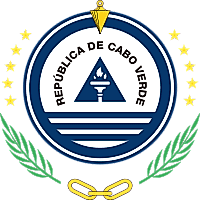
The current official national emblem of Cape Verde was adopted in 1992. It features a torch and a triangle within a circle. The torch and triangle are symbols of freedom and national unity. Also, within the circle is the name of the nation written in Portuguese (República De Cabo Verde). The ten stars on either side of the circle represent the islands Of Cape Verde. At the top of the circle is the plumbob which is a symbol of righteousness. At the bottom, there are three chain links.
National Motto
(Portuguese): “Unidade, Trabalho, Progresso” (“Unity, Work, Progress”)
National Anthem
- Anthem Title: "Cântico da Liberdade" ("Chant of Liberty")
- Music Composer: Adalberto Higino Tavares Silva
- Lyricist: Amilcar Spencer Lopes
- Date of Adoption: July 5, 1996
"Cântico da Liberdade" ("Chant of Liberty") is the national anthem of Cape Verde. The music of the anthem was composed by Adalberto Higino Tavares Silva. The lyrics have been authored by Amilcar Spencer Lopes. The anthem was officially adopted on July 5, 1996.
"Cântico da Liberdade" (Portuguese)
Canta, irmão
Canta meu irmão
Que a Liberdade é hino
E o Homem a certeza.
Com dignidade, enterra a semente
no pó da ilha nua
No despenhadeiro da vida
A esperança é
Do tamanho do mar
Que nos abraça
Sentinela de mares e ventos
Perseverante
Entre estrelas
E o Atlântico
Entoa o cântico da Liberdade
Canta, irmão
canta meu irmão
Que a Liberdade é hino
E o Homem a certeza.
"Chant of Liberty"
Sing, brother
Sing, my brother
For Liberty is a hymn
And Man the certainty.
With dignity, bury
The seed
In the dust of the naked island
At the escarpment of life
Hope is as big as
The sea
Which embraces us
Sentinel of the oceans and winds
Persevering
Between the stars and the Atlantic
Intone the Chant of Liberty.
Sing, brother
Sing, my brother
For Liberty is a hymn
And Man the certainty.
The Currency of Cape Verde is the Cape Verdean escudo
The current official currency of the Republic of Cape Verde is Cape Verdean escudo (CVE).
Coins
In 1830, under the Portuguese rule, coins were introduced in the denominations of 5, 10, 20, and 50 centavos and 1 escudo. The lower denominations were of bronze, while the 50 centavos and 1 escudo were in nickel-bronze. In 1977, after independence, coins were issued in 20 and 50 centavos, 1, 2 1/2, 10, 20, and 50 escudos. Due to severe inflation, the centavo coins disappeared from circulation. In 1994, the present denomination coins were introduced. Coins of denominations 1, 5, 10, 20, 50, 100 are commonly used while 200, 500 coins are rarely used.
Banknotes
The Branco Nacional Ultramarino introduced notes in 1914, in the denominations of 4, 5, 10, 20, and 50 centavos. Notes for 1, 5, 10, 20, 50, and 100 escudos were issued in 1921. In 1945, all denominations below 5 escudos were replaced by coins and there were only notes of 500 escudos. On July 5, 1975, after independence, 100, 500- and 1000-escudo notes were issued. In 1989, 100, 200, 500, 1000- and 2500-escudo notes were issued. In 1992, 200, 500, 1000, and 2000- and 5000-escudo notes were issued. In 2005, the 200 notes were redesigned to celebrate 30 years of independence. In 2007, the 500 and 1000 notes were also redesigned. On December 22, 2014, new banknotes were issued by Banco de Cabo Verde to honor the reputed national figures of various fields. The notes were in the denominations of 200, 500, 1000, 2000, 2500, and 5000.
Historical Currencies of Cape Verde
In 1914, escudo became the currency of Cape Verde. The escudo replaced the Cape Verdean real. However, Portuguese coins were used in Cape Verde until 1930. The Cape Verde escudo was pegged equal to Portuguese escudo until 1975. Afterward, it depreciated and in 1984 it became stable again. In 1998, an agreement led to the pegging of the Portuguese escudo at 0.55 Cape Verdean escudo. The replacement of Portuguese escudo by euro led to its pegging with the Cape Verdean escudo at 110.265 CVE = 1 EUR.
